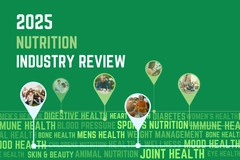
- Industry news
Industry news
- Category news
- Reports
- Key trends
- Multimedia
Multimedia
- Journal
- Events
- Suppliers
Suppliers
- Home
- Industry news
Industry news
- Category news
- Reports
- Key trends
- Multimedia
Multimedia
- Events
- Suppliers
Suppliers
Calls for arsenic labeling as UK researchers reveal “concerning” levels in rice

04 May 2020 --- Half of UK rice contains more arsenic than the European Commission (EC) regulations for rice meant for the consumption for infants or young children. This is according to a new study from the University of Sheffield, which the researchers say is the first to measure differences in human health risks from arsenic using a substantial number of rice varieties marketed in the UK. The scientists are now calling for labeling to warn the public about levels of arsenic in rice.
“We found that not all rice sold is not suitable for infants or small children. At the moment nobody knows what type or brand is suitable for children. Product labels could provide information on whether they are safe for children or they could say maximum portion size allowed for infants based on the regulations and the concentration of inorganic arsenic in a given product,” Dr. Manoj Menon, Environmental Soil Scientist in the Department of Geography at the University of Sheffield and lead author of the study, tells NutritionInsight.
The researchers argue that babies under the age of one must be restricted to a maximum of 20 g per day of the 28 rice varieties that breached regulations to avoid risks of developing cancer in later life. They have recommended that the UK Government and European Commission introduce labeling to clarify whether rice is safe for consumption by infants and children under five.
The study, which is published in Ecotoxicology and Environmental Safety, reveals that 28 out of 55 rice samples sold in the UK had higher levels of arsenic than the maximum limits for infants and young children. Brown rice has higher levels of the carcinogen than white or wild rice because it contains the bran, which is the outer layer of the grain. Meanwhile, organically grown rice was found to contain significantly higher levels than non-organically grown rice. White rice contained the lowest levels of arsenic.
“We were surprised that out of the 55 types of rice investigated, 20 of them did not have information about the origin. We would have benefited a lot if we knew the origin of all these samples. I was also shocked to see the exposure risk to infants, but it is interesting to see that adults do not have to worry too much,” states Dr. Menon.
Rice is especially susceptible to arsenic levels as it is grown in flooded fields more than other cereals, thus allowing the water-soluble toxin to accumulate. Arsenic exposure affects almost every organ in the body and can cause skin lesions, cancer, diabetes and lung diseases.
 Rice and rice-based products are widely used for weaning and as baby food, due to their nutritional benefits and relatively low allergic potential.Breaching food safety regulations
Rice and rice-based products are widely used for weaning and as baby food, due to their nutritional benefits and relatively low allergic potential.Breaching food safety regulations
The researchers note that up to 90 percent of UK households buy rice, with the average person consuming around 100 g per week. Rice and rice-based products are widely used for weaning and as baby food, due to their nutritional benefits and relatively low allergic potential. However, the European Food Safety Authority (EFSA) notes that children are two to three times more susceptible to arsenic risks than adults due to their lower body weight.
“Brown and wild rice are healthy foods full of fiber and vitamins, and there is no need for grown-ups to avoid them. However, it is concerning to see so many varieties sold in the UK breaching food safety regulations,” says Dr. Menon.
He notes that at the moment, inorganic arsenic levels in brown rice are capped at 0.25 mg per kg. Under this regulated environment, there is no harm in eating brown rice, although it depends on the amount consumed. Dr. Menon adds that white rice is a safer option for children as it has lower arsenic concentrations.
The research was funded as part of the UK’s Science and Technology Facilities Council (STFC) Food Network+. The network brings together more than 750 international and multidisciplinary researchers from across the agri-food sector to work with experts from STFC’s research facilities, all with the aim of solving some of the world’s greatest food sustainability challenges.
In March, the US Food and Drug Administration (FDA) revealed that arsenic levels are dropping in infant rice cereals. This comes as infant nutrition continues to be the focus of great attention. According to Innova Market Insights, there has been a 13 percent average annual growth of infant nutrition launches (2014 to 2018). Baby cereals and biscuits are the fourth market category, representing 18 percent of infant nutrition launches in 2018. However, the subcategory saw a CAGR of 11 percent (2014 to 2018).
By Katherine Durrell











